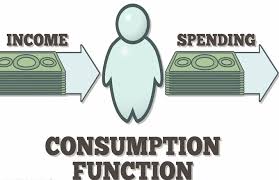Fiscal Policy
How does the government stabilize the economy?
The government has 2 different tool boxes it can use:
1. Fiscal Policy
Actions by congress to stabilize the economy.
2.Monetary Policy
Actions by the Federal reserve bank to stabilize the economy.
Fiscal Policy
Changed in expenditures or/and revenues of the federal government
- 2 tools of fiscal policy:
- Taxes- government can
increase or decrease taxes.
- Spending- government can
increase or decrease spending
- Fiscal Policy is
enacted to promote our nation's economic goals: full employment, price
stability, economic growth
Deficit, Surpluses, and Debt
- Balanced
budget
-Revenues =
Expenditures
- Budget
Deficit
- Revenues >
Expenditures
- Government
Debt
- Sum of all deficits
- Sum of all surpluses
- Government must
borrow money when it runs a budget deficit
- Government
borrows from:
-Individuals
-Corporations
- Financial
institutions
- Foreign entities of
foreign governments
Fiscal Policy
- Discretionary Fiscal Policy(action)
- Expansionary Fiscal Policy - think deficit
- Contractionary Fiscal Policy - think surplus
- Non- Discretionary Fiscal Policy ( no action)
3 Types of Taxes
1. Progressive Taxes- takes a larger percent of
income from high income group (takes more from rich people).
Ex.: Current Federal Income Tax system.
2. Proportional Taxes (flat rate) - takes the
same percent of income from all income groups.
Ex.: 20% flat income tax on all income groups.
3. Regressive Tax- takes a larger percentage
from low income group (takes more from poor people)
Ex.: Sales Tax; any consumption tax.
Contractionary Fiscal
Policy ( The Brakes)
Laws that
reduce inflation, decrease GDP (Close a inflationary Gap)
- Decrease
Government spending
- Tax Increases
- Combination of
the two
|
If in a Inflation, then G↓.: AD←.:
GDPR↓ & PL↓.: u%↑ & π↓
or T↑.: DI↓.: C↓.: AD←.: GDPR↓ & PL↓.: u%↑ & π↓
|
Expansionary Fiscal Policy (The Gas)
Laws that reduce unemployment and increase GDP (Close Recessionary Gap)
- Increase
Government spending
- Decrease Taxes on consumption
- Combination of
the two
If Recession, then G↑.: AD→.: GDPR↑
& PL↑.: u%↓ & π↑ or T↓.: DI↑.:
C↑.: AD→.: GDPR↑ & PL↑.: u%↓ & π↑
|
- Anything that
increases the government budget deficit during a recession and increases
its budget surplus during inflation without
requiring explicit action by policy makers.
1.
Transfer Payments
Automatic or Built - In
Stabilizers
A. Welfare
checks
B. Food
Stamps
C.
Unemployment checks
D.
Corporate dividends
E. Social
Security
F.
Veteran's benefits


























